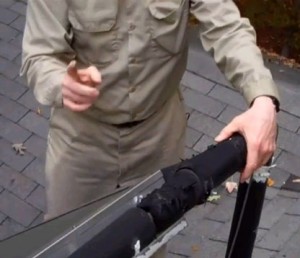Insulation Tips!
The best way to protect outside piping is by using aluminum jacketing over either fiberglass or iso foam insulation. The jacket must be carefully installed to prevent moisture penetration. This is done by “shingling” or lapping the joints downhill. Seams should be on the bottom. Caulking is used if the other measures are not adequate.
The butt joint between the aluminum jacket and the collectors – and the small lines between collectors – are the hardest to seal. A big bead of silicone caulk at the joint is required. This spot is the most prone to shrinking and pulling apart, so it should be checked periodically.

For testing a newly installed system on a cloudy day, one solar controller company (now out of business) used to sell a little box with two variable resistors inside. The variable resistors matched the range of resistance values of the 10K thermistors. A set of (semi) calibrated marks on the dial indicated the approximate temperature value.
I have made calibration simulators for internal use, but never sold them as a product. The main use is to simulate a high delta T to turn the controller on, a low delta T to turn the controller off, and a high value on the low sensor to test the high limit control.
We used to do the same thing by shorting the collector leads (= high temp), and shorting the tank sensor (=high temp) to test the high limit. Modern that some controllers don’t like shorting, so several low value resistors could be used for the same tests.
Dr. Ben

Dr. Ben, does fiberglass insulation have any advantage over isocyanate foam, or vice versa?
Mainly no. Fiberglass is cheaper and a little easier to handle, since it is more pliable. Iso has a higher R value, so it is better insulation for the same thickness.
Water incursion is bad for either one, but soaked fiberglass has a better chance of drying out than Iso. Water logged Iso will never dry out.
The main benefit of fiberglass is cost.
Ben